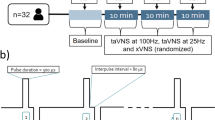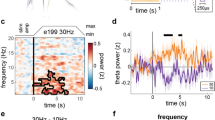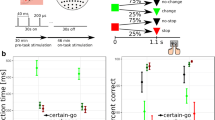Abstract
There is great interest about the therapeutic potentialities of transcutaneous vagus nerve stimulation (tVNS) applied to neuropsychiatric disorders. However, the mechanisms of action of tVNS and its impact on cortical excitability are unclear. To this regard, transcranial magnetic stimulation (TMS) can be useful because it is able of evaluating non-invasively excitatory and inhibitory circuitry of the human cortex. Aim of the present study is to investigate the effects of tVNS on cerebral cortex excitability in healthy volunteers by means of TMS. Ten healthy subjects participated in this randomized placebo-controlled double-blind study. Real tVNS was administered at left external acoustic meatus, while sham stimulation was performed at left ear lobe, both of them for 60 min. We evaluated motor thresholds, motor evoked potential amplitude, recruitment curves, and short-interval intracortical inhibition (SICI) in right and left motor cortex. Such parameters were evaluated before and 60 min after the exposure to tVNS, for both the real and the sham stimulation. Cardiovascular parameters were monitored during the stimulation. A generalized linear model for repeated measures was implemented to assess the effect of time and stimulation type on cardiovascular and neurophysiological variables. SICI, a double-pulse TMS paradigm informative of GABA-A activity, was significantly increased in right motor cortex after real tVNS. Other neurophysiological parameters, as well as cardiovascular variables, remained unchanged. Our findings confirm that tVNS is a safe and effective way to stimulate vagus nerve and provide innovative data about the possible mechanisms of action that supports the potential therapeutic application of this technique.



Similar content being viewed by others
References
Antal A, Polania R, Schmidt-Samoa C, Dechent P, Paulus W (2011) Transcranial direct current stimulation over the primary motor cortex during fMRI. Neuroimage 55:590–596
Ben-Menachem E (2002) Vagus-nerve stimulation for the treatment of epilepsy. Lancet Neurol 1:477–482
Ben-Menachem E, Hamberger A, Hedner T, Hammond EJ, Uthman BM, Slater J et al (1995) Effects of vagus nerve stimulation on amino acids and other metabolites in the CSF of patients with partial seizures. Epilepsy Res 20:221–227
Bergey GK (2013) Neurostimulation in the treatment of epilepsy. Exp Neurol 244:87–95
Binnie CD (2000) Vagus nerve stimulation for epilepsy: a review. Seizure 9:161–169
Di Lazzaro V, Restuccia D, Oliviero A, Profice P, Ferrara L, Insola A et al (1998) Magnetic transcranial stimulation at intensities below active motor threshold activates intracortical inhibitory circuits. Exp Brain Res 2:265–268
Di Lazzaro V, Oliviero A, Meglio M, Cioni B, Tamburrini G, Tonali P et al (2000) Direct demonstration of the effect of lorazepamon the excitability of the human motor cortex. Clin Neurophysiol 111:794–799
Di Lazzaro V, Oliviero A, Pilato F, Saturno E, Dileone M, Meglio M et al (2004) Effects of vagus nerve stimulation on cortical excitability in epileptic patients. Neurology 12:2310–2312
Fallgatter AJ, Neuhauser B, Herrmann MJ, Ehlis AC, Wagener A, Scheuerpflug P et al (2003) Far field potentials from the brain stem after transcutaneous vagus nerve stimulation. J Neural Transm 12:1437–1443
Grimm S, Bajbouj M (2010) Efficacy of vagus nerve stimulation in the treatment of depression. Expert Rev Neurother 10:87–92
Groves DA, Brown VJ (2005) Vagal nerve stimulation: a review of its applications and potential mechanisms that mediate its clinical effects. Neurosci Biobehav Rev 3:493–500
He W, Jing X, Wang X, Rong P, Li L, Shi H et al (2013) Transcutaneous auricular vagus nerve stimulation as a complementary therapy for pediatric epilepsy: a pilot trial. Epilepsy Behav 3:343–346
Hein E, Nowak M, Kiess O, Biermann T, Bayerlein K, Kornhuber J et al (2013) Auricular transcutaneous electrical nerve stimulation in depressed patients: a randomized controlled pilot study. J Neural Transm 5:821–827
Korchounov A, Ilic TV, Ziemann U (2003) The alpha2-adrenergic agonist guanfacine reduces excitability of human motor cortex through disfacilitation and increase of inhibition. Clin Neurophysiol 114:1834–1840
Kraus T, Hösl K, Kiess O, Schanze A, Kornhuber J, Forster C (2007) BOLD fMRI deactivation of limbic and temporal brain structures and mood enhancing effect by transcutaneous vagus nerve stimulation. J Neural Transm 11:1485–1493
Kraus T, Kiess O, Hösl K, Terekhin P, Kornhuber J, Forster C (2013) CNS BOLD fMRI effects of sham-controlled transcutaneous electrical nerve stimulation in the left outer auditory canal: a pilot study. Brain Stimul 5:798–804
Kujirai T, Caramia MD, Rothwell JC, Day BL, Thompson PD, Ferbert A et al (1993) Corticocortical inhibition in human motor cortex. J Physiol 471:501–519
Langguth B, Sand P, Marek R, Landgrebe M, Frank E, Hajak G et al (2009) Allelic variation in the serotonin transporter promoter modulates cortical excitability. Biol Psychiatry 3:283–286
Lehtimäki J, Hyvärinen P, Ylikoski M, Bergholm M, Mäkelä JP, Aarnisalo A et al (2013) Transcutaneous vagus nerve stimulation in tinnitus: a pilot study. Acta Otolaryngol 4:378–382
Nemeroff CB, Mayberg HS, Krahl SE, McNamara J, Frazer A, Henry TR et al (2006) VNS therapy in treatment-resistant depression: clinical evidence and putative neurobiological mechanisms. Neuropsychopharmacology 7:1345–1355
Polak T, Markulin F, Ehlis AC, Langer JB, Ringel TM, Fallgatter AJ (2009) Far field potentials from brain stem after transcutaneous vagus nerve stimulation: optimization of stimulation and recording parameters. J Neural Transm 10:1237–1242
Rong PJ, Fang JL, Wang LP, Meng H, Liu J, Ma YG et al (2012) Transcutaneous vagus nerve stimulation for the treatment of depression: a study protocol for a double blinded randomized clinical trial. BMC Complement Altern Med 12:255
Rong P, Liu A, Zhang J, Wang Y, Yang A, Li L et al (2014) An alternative therapy for drug-resistant epilepsy: transcutaneous auricular vagus nerve stimulation. Chin Med J (Engl) 2:300–304
Sackeim HA, Rush AJ, George MS, Marangell LB, Husain MM, Nahas Z, Johnson CR, Seidman S, Giller C, Haines S, Simpson RK Jr, Goodman RR (2001) Vagus nerve stimulation (VNS) for treatment-resistant depression: efficacy, side effects, and predictors of outcome. Neuropsychopharmacology 5:713–728
Stefan H, Kreiselmeyer G, Kerling F, Kurzbuch K, Rauch C, Heers M et al (2012) Transcutaneous vagus nerve stimulation (t-VNS) in pharmacoresistant epilepsies: a proof of concept trial. Epilepsia 7:115–118
Sun Z, Baker W, Hiraki T, Greenberg JH (2012) The effect of right vagus nerve stimulation on focal cerebral ischemia: an experimental study in the rat. Brain Stimul 1:1–10
Ventureyra EC (2000) Transcutaneous vagus nerve stimulation for partial onset seizure therapy. A new concept. Childs Nerv Syst 16:101–102
Author information
Authors and Affiliations
Corresponding author
Rights and permissions
About this article
Cite this article
Capone, F., Assenza, G., Di Pino, G. et al. The effect of transcutaneous vagus nerve stimulation on cortical excitability. J Neural Transm 122, 679–685 (2015). https://doi.org/10.1007/s00702-014-1299-7
Received:
Accepted:
Published:
Issue Date:
DOI: https://doi.org/10.1007/s00702-014-1299-7




